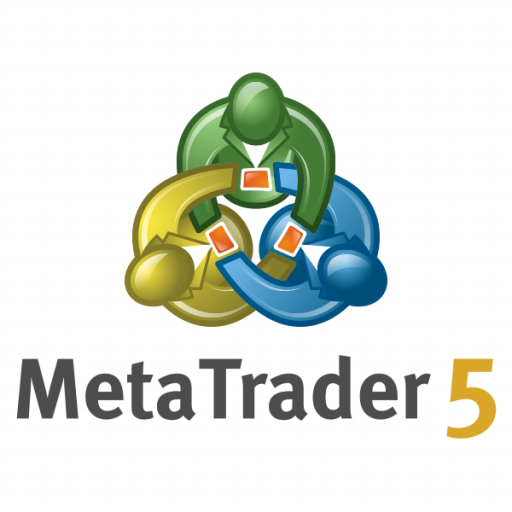Backtesting data
- Good backtesting data is imperative to being successful as an algo trader.
- With increasing timeframe, the accuracy of the backtesting data becomes increasingly more important.
- Personally, I have had many issues with the accuracy of the backtesting data and the history period which resulted in too optimistic backtesting results and thus sustained losses.
Types of backtesting data:
Types of backtesting data — quick overview
Tick data — every trade or quote; sub-second granularity; required for ultra-accurate intraday and market-impact sensitive tests.
1-second / intraday (minute) bars — aggregated ticks into 1s/1m/5m/15m bars; common for high-frequency and intraday strategies.
Hourly / 4‑hour bars — lighter intraday resolution used for swing-intraday hybrids.
Daily OHLCV — open/high/low/close/volume per trading day; sufficient for position and swing strategies.
Adjusted daily (corporate actions applied) — daily data with splits/dividends/rights adjusted for realistic equity backtests.
Level 2 / order book data — full order-book snapshots (depth of market); used for execution modelling, market making, and realistic slippage.
Trade and quote (TAQ) data — consolidated trades and quotes across venues; used for realistic execution and microstructure research.
Fundamental/alternative data — earnings, fundamentals, economic series, sentiment, news, alt data (satellite, footfall); used in factor and cross-asset strategies.
Reference & corporate history — delisting, ticker changes, corporate actions history to avoid survivorship bias.
Synthetic / reconstituted (smoothed) data — reconstructed continuous futures, rollover-adjusted contracts for futures/backtests.
Source
Data types & frequency
Cost (typical)
Platforms / compatibility
Accuracy / notes
Yahoo / yfinance
Daily OHLCV, limited intraday
Free
Python, Backtrader, own CSV imports
Good for daily; not reliable for intraday; no guaranteed uptime
Alpha Vantage
Daily/Intraday up to 1min, fundamentals
Free tier; paid from $20+/mo
Python, APIs, Quant platforms
Free limited calls; minute data limited and delayed
Quandl (Nasdaq Data Link)
Daily, fundamentals, paid premium datasets
Many free; paid $50–$500+/mo
Python, Excel, Quant platforms
High-quality curated datasets; costs vary by dataset
Tiingo
Daily & intraday (1min), fundamentals
$10–$50/mo
Python, API, Quant platforms
Good for retail; documentation solid
Polygon.io
Tick, minute, daily, forex, crypto
$0–$199+/mo
Python, JS, Trading platforms via API
Intraday & tick tiers paid; low-latency options
Interactive Brokers (IB) historical
Tick/minute/daily via TWS/API
Broker account required; data fees may apply
IB API, Backtrader, custom
Good for forex/stocks via IB; limited lookback for ticks
QuantQuote / TickData
Tick historical (US equities)
$hundreds to thousands one-off
Local files; Backtesting engines
Institutional-grade tick; expensive
LOBSTER / NASDAQ ITCH
Order-book / TAQ
Research licenses / pay-per-use
Academic/research tools
Very high accuracy for microstructure; complex format
CCXT (crypto exchanges)
Trades/ticks & candles for crypto
Free for many exchanges; exchange fees
Python, JS, CCXT-supported libs
Good for crypto; data quality varies by exchange
CME / Exchange direct feeds
Futures ticks / market depth
Exchange fees; expensive (enterprise)
Professional platforms, in-house systems
Best accuracy for futures; costly and complex
Dukascopy
Tick & 1min forex history
Free / low-cost
MetaTrader, CSV export
Popular for FX retail backtesting; good intraday history
Barchart / EODHD
Daily & intraday datasets
$20–$200+/mo
APIs, CSV
Commercial grade for many markets
Refinitiv / Bloomberg
Tick, TAQ, fundamentals, news
Enterprise pricing (very high)
Institutional terminals/APIs
Best-in-class accuracy and coverage for institutions
Selection criteria — what to evaluate for each source
Time resolution needed: daily vs minute vs tick vs order-book. Match data granularity to strategy horizon.
Market coverage: exchanges, instruments, currencies, futures continuous contracts, delisting history.
Data quality & adjustments: corporate action adjustments, survivorship bias mitigation, tick reconstruction.
Latency & freshness: do you need real-time or historical only; how quickly is data delivered.
Cost vs budget: free is fine for proof-of-concept; pay for intraday/tick/order-book when execution realism matters.
Format & integration: CSV/Parquet/API, Python/MT5/QuantConnect/Backtrader/Zipline compatibility.
Licensing & redistribution: can you store and reuse, redistribute, or publish screenshots from the data vendor.
Support for execution modelling: does the vendor provide NBBO, spreads, fees, or do you model slippage yourself.
Practical recommendations for AlgoProfitsLab
Start with a tiered approach:
Use free daily sources (yfinance, Tiingo free tier) for long-term strategy prototyping.
Move to 1m/5m intraday (Tiingo paid, Polygon, Dukascopy for FX) for intraday strategies.
Buy tick or TAQ data (QuantQuote, TickData, Polygon tick tier) only when execution modelling or market impact materially changes results.
Always check for:
Adjusted prices and corporate action history for equities.
Survivorship bias: prefer datasets that include delisted symbols or provide historical universes.
Realistic costs: add commissions, spreads, variable slippage in your backtests.
Platform fit:
MetaTrader 5: works well with broker-provided history, Dukascopy for FX; for tick-accurate equity/futures consider importing cleaned CSV ticks.
Python frameworks (Backtrader, Backtesting.py, Zipline): easy to plug APIs (Tiingo, Polygon, Quandl).
QuantConnect / QuantRocket: good if you want cloud compute plus curated datasets; expect platform-specific costs.
Accuracy vs cost rule-of-thumb:
If your edge is intraday timing or market making → buy tick/order-book data.
If your edge is cross-day signals, momentum, or fundamentals → high-quality daily and fundamentals are usually sufficient.
- What backtesting data you need really depends on what tools you use. Here I have split it
1. Copy Trading Platforms
Copy trading is a form of automated investing where you replicate the trades of another, typically more experienced, trader. When they open, modify, or close a position, your account mirrors those actions in real time.
With copytrading you have the freedom to:
Choose a trader based on their past performance and profile
Pause, stop or intervene at any moment.
The two platforms on this list are eToro and ZuluTrade. Stictly speaking is eToro not algo trading as you invest in a trader who manually executes trades. With ZuluTrade you invest in algorithms developed by the trader.
Personal experience: I tried Zulutrade with a demo account and experienced big, sudden losses.
| Platform | Minimum Investment | Broker Model | Risk Control | Trade Control | Transparency Tools | Asset Types | Backtesting / Simulation |
|---|---|---|---|---|---|---|---|
| eToro | $200 per trader | Integrated brokerage | Copy Stop-Loss (40% cap) | Pause/resume/stop any time | Stats, risk scores, portfolio view | Stocks, crypto, ETFs, commodities, indices, more | Not built-in |
| ZuluTrade | $50–$200 (broker-dependent) | Broker-neutral (14+ connections) | ZuluGuard™ auto-disconnect | Modify or close manually | Leaderboards, simulations, reviews | Mostly forex & crypto (broker-dependent) | Simulations before investing |
2. Creating Strategies Using Natural Language or Visual Builders
No-code trading platforms leverage natural language processing and visual programming to lower the barrier for strategy development, which might be an interesting option for beginner algo traders. In this context, “natural language” tools allow users to describe entry and exit rules in plain English, while “visual builders” present strategy components as modular blocks or nodes.
Capitalise.ai
Capitalise.ai lets you describe trading rules in plain English and automates execution. The platform feels very intuitive and is therefore beginner friendly. However, its free tier comes with notable constraints. The libraries are quite limitied, You also can’t access certain indicators—there’s no Hull Moving Average, for example—so strategy diversity feels restricted. The platform does offer a TradingView integration, enabling you to execute buy/sell signals into Capitalise.ai, but that advantage comes at the expense of an additional TradingView subscription if you want to run multiple strategies simultaneously. Moreover, there are other ways to execute tradingview strategies as we will find out below.
Composer.trade
Composer.trade uses a visual, drag-and-drop interface for building and backtesting algos, making it more flexible—but also more complex—than Capitalise.ai. . Its key drawback is pricing: a standard subscription runs $32 per month. You can try it for free, but every live trade on the no-cost plan incurs a 0.3% commission, which quickly erodes profits and makes the free offering less attractive for active users.
Build Alpha
Build Alpha stands out by generating fully coded strategies from an extensive library. You get deep transparency with essential metrics—maximum drawdown, profit factor, Sharpe and Sortino ratios—as well as advanced KPIs like correlation coefficient and System Quality Number. Its robustness-testing suite (out-of-sample, Monte Carlo, variance tests, etc.) gives you confidence in strategy durability. All historical data is included and updated weekly. This power-user feature set comes at a price: a one-time, lifetime license of around $1,500 (you’ll need to request a quote). One point of concern: their blog hasn’t been updated since October 2022.
Personal experience: I tried Capitalise.ai and noticed trades often stop without explanation, and the backtesting period is too short (only up to 3 months) to create profitable strategies.
| Platform | Interface Type | Indicator/Signal Library | Backtesting Flexibility | Integration Options | Cost Structure | Advanced Analytics | Backtesting Data |
|---|---|---|---|---|---|---|---|
| Capitalise.ai | Natural-language | Limited set (no HMA, few oscillators) | Short window, no Monte Carlo | TradingView (paid tier for >1 strat) | Free | Basic P/L only; no drawdown or risk ratios | Composite feed, limited backtest span |
| Composer.trade | Visual drag-and-drop | Standard TA suite | Unlimited, basic simulation only | API, broker connectors | $32/mo or free w/ 0.3% trade fee | Returns, drawdown & Sharpe; no robustness tests | Equities/ETFs back to 1990 (daily bars) |
| Build Alpha | Signal-selection & code gen | 7,000+ signals | In/out-of-sample, Monte Carlo | Standalone, export code | One-time $1,500 license | Full KPI suite: drawdown, PF, Sharpe & Sortino, correlation, SQN | 25+ years of multi-asset data, weekly updates |
3. Optimize Pre-Made Strategies
Pre-built algorithmic strategies serve as flexible templates: you begin with a tested model and adjust key parts—entry signals, position size, risk limits—to fit your market view. This method gives you more control than fixed copy trading or simple natural language tools. By repeatedly testing and refining, you turn a basic strategy into a custom system, unlocking better customization and performance than one-click copying or natural language commands allow. Most trading strategies have adjustable settings, allowing you to develop an edge in the market.
MetaTrader 4/5
MetaTrader version 4 or 5 is a good starting point for algorithmic trading. Although not very user-friendly, it offers many features and is free. It’s a complete platform where you can get free trading strategies called expert advisors, test them, and trade—all in one place. Free trading strategies, called expert advisors, can be acquired through the MQL market. What is exceptional with MetaTrader is that you can optimize multiple parameters at the same time. Metatrader also offers a VPS service which allows you to execute trades 24/7 and has a large community of users. MetaTrader also provides a VPS service for 24/7 trading and has a large user community. If pre-made strategies don’t work for you, you can code your own later, even using Python!
IWant to know if your broker supports MetaTrader? See my Broker Overview!
TradingView
TradingView is a popular charting platform, but it offers more than just price charts and historical data. Many retail developers share free automated trading strategies on it. You can set alerts that send signals via webhook URLs to brokerage platforms with little effort—mostly just copying and pasting code. This lets you send trading signals directly to platforms like capitalise.ai or MetaTrader (using PineConnector). The benefits include an easy-to-use online interface, built-in backtesting, and a large community for support. The downside is that you need to connect several programs, which can cause issues, and running multiple strategies requires a TradingView subscription starting at 14 euros per month. Also, the backtesting options in TradingView are limited compared to MetaTrader.
Personal experience:I've used MetaTrader for nearly a year and really like it. It offers a perfect balance between easy, no-code trading and lots of flexibility. My trades run smoothly, backtests reflect real results, and it's affordable.
| Platform | Subscription Cost | Brokerage Integrations | Strategies Library | Advanced Analytics | Backtesting Data | Mobile/Desktop Accessibility | Community & Support | VPS Support |
|---|---|---|---|---|---|---|---|---|
| MetaTrader 4/5 | Free platform; broker fees apply | Native via broker plugins (1,000+ brokers) | MQL5 Market & CodeBase (4,000+ EAs) | Comprehensive metrics: profit factor, max drawdown, Sharpe, custom indicators | Broker-supplied tick & historical data | Desktop (full EA support); mobile (charts & orders; no EAs) | MQL5 community, broker forums & official docs | Many brokers offer integrated VPS (with minimum volume); supports any Windows VPS |
| TradingView | Free; Pro $14.95/mo – Premium $59.95/mo | Limited direct (OANDA, FXCM); webhook alerts | Public & protected Pine Script library (100k+) | Standard metrics: net profit, trade stats, drawdown; limited custom reporting | Daily/intraday (1–5+ years; extended on paid tiers) | Web, desktop & mobile apps (near feature parity) | Active public forum, script discussions & help center | No native VPS; requires external or third-party hosting for webhook handlers |
My Recommendation
For beginners and experienced traders, I suggest starting with MetaTrader 4 or 5. It’s free, offers many backtesting tools, and supports both free and paid expert advisors. You can easily adjust settings to match your risk level.
Want to see how my live algorithms perform with free Expert Advisors? See the results here!








